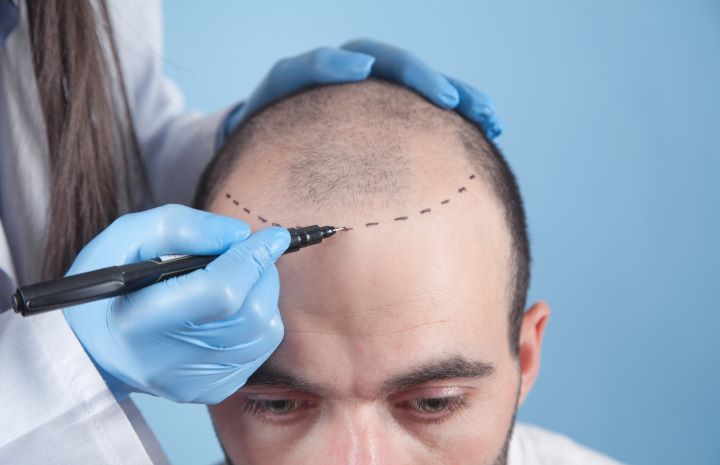Scalp Psoriasis Explained: What Causes It and How to Treat It
Dealing with constant itching, flaking, or thick patches on your scalp? It could be more than dandruff—it might be scalp psoriasis. This common autoimmune condition can lead to irritation, embarrassment, and even hair thinning if ignored. In this guide, you'll discover what causes it, how to spot early symptoms, and which soothing treatments actually work. Whether you're newly diagnosed or tired of recurring flare-ups, here’s your path to a calmer, healthier scalp.

What Are the Visual Signs Found in Psoriasis Pictures
Identifying scalp psoriasis through visual examination reveals several distinctive characteristics that differentiate it from other scalp conditions. The most prominent signs include thick, silvery-white scales that adhere firmly to red or pink inflamed patches of skin. These plaques often have well-defined borders and can vary in size from small coin-sized areas to larger regions covering significant portions of the scalp.
The scales in psoriasis pictures typically appear more substantial and persistent compared to regular dandruff flakes. When these scales are removed, they often reveal a shiny, sometimes bleeding surface underneath. The condition frequently affects areas beyond just the scalp, including the hairline, forehead, back of the neck, and around the ears, creating a distinctive pattern that helps healthcare providers make accurate diagnoses.
Understanding Pictures of Plaque Psoriasis on the Scalp
Plaque psoriasis represents the most common form of scalp psoriasis, accounting for approximately 80-90% of all psoriasis cases. In clinical photographs, plaque psoriasis appears as raised, inflamed lesions covered with silvery-white scales that build up over time. These plaques can range from a few millimeters to several centimeters in diameter and often have irregular shapes.
The severity of plaque psoriasis varies significantly between individuals. Mild cases may show small, isolated patches with minimal scaling, while severe cases can involve nearly the entire scalp with thick, crusty formations. The surrounding hair typically remains intact, though excessive scratching or aggressive treatment can lead to temporary hair loss in affected areas.
Why Scalp Psoriasis Picking Worsens the Condition
The urge to pick at psoriatic scales is understandable given the itching and discomfort they cause, but this behavior significantly worsens the condition through a phenomenon known as the Koebner response. This reaction causes new psoriatic lesions to develop at sites of skin trauma, including areas that have been scratched, picked, or otherwise injured.
Picking at scales can create a cycle of inflammation and irritation that extends healing time and increases the risk of secondary bacterial infections. The mechanical trauma from fingernails can damage the already compromised skin barrier, leading to increased redness, swelling, and sometimes bleeding. Additionally, constant manipulation of the affected areas can cause scarring and permanent hair follicle damage, potentially resulting in permanent hair loss in severe cases.
Root Causes and Triggers of Scalp Psoriasis
Scalp psoriasis develops from a complex interaction of genetic predisposition and environmental triggers. Research indicates that approximately 40% of people with psoriasis have at least one family member with the condition, suggesting a strong hereditary component. Specific genes, particularly those in the HLA region of chromosome 6, have been linked to increased psoriasis susceptibility.
Environmental triggers play a crucial role in activating the condition in genetically susceptible individuals. Common triggers include physical trauma to the scalp, stress, certain medications, infections (particularly streptococcal throat infections), hormonal changes, and lifestyle factors such as smoking and excessive alcohol consumption. Weather changes, particularly cold, dry conditions, can also exacerbate symptoms by reducing skin moisture and increasing irritation.
Treatment Options and Management Strategies
Effective scalp psoriasis treatment typically involves a multi-faceted approach tailored to the severity and extent of the condition. Topical treatments form the foundation of most treatment plans, including corticosteroids, vitamin D analogs like calcipotriene, and tar-based preparations. These medications work by reducing inflammation, slowing skin cell production, and helping to normalize the skin renewal process.
For moderate to severe cases, systemic treatments may be necessary. These include oral medications such as methotrexate, cyclosporine, and newer biologic drugs that target specific immune system pathways involved in psoriasis development. Light therapy, particularly narrowband UV-B treatment, has shown significant effectiveness for many patients when topical treatments prove insufficient.
| Treatment Type | Cost Range | Effectiveness | Availability |
|---|---|---|---|
| Topical Corticosteroids | $20-$150/month | High for mild-moderate cases | Widely available |
| Vitamin D Analogs | $100-$300/month | Moderate to high | Prescription required |
| Biologic Medications | $3,000-$8,000/month | Very high for severe cases | Specialty prescription |
| Light Therapy | $50-$200/session | High with consistent use | Dermatology clinics |
Prices, rates, or cost estimates mentioned in this article are based on the latest available information but may change over time. Independent research is advised before making financial decisions.
The management of scalp psoriasis extends beyond medical treatment to include lifestyle modifications that can significantly impact symptom severity. Gentle hair care practices, stress reduction techniques, maintaining a healthy diet, and avoiding known triggers all contribute to better long-term outcomes. Regular follow-up with healthcare providers ensures treatment plans remain effective and can be adjusted as needed based on response and any side effects that may develop.
This article is for informational purposes only and should not be considered medical advice. Please consult a qualified healthcare professional for personalized guidance and treatment.




